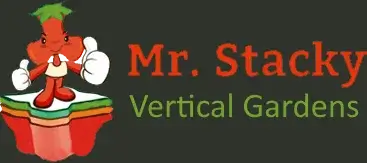If you’ve ever contemplated vertical gardening while aiming to cut down on water consumption, our innovative stackable hydroponic pots offer an excellent entry point.
Introducing the Mr. Stacky Smart Farm: A Hydroponic Game-Changer
The Smart Farm is ingeniously crafted to empower gardeners dealing with limited spaces and tight budgets, enabling them to elevate both the scale and proficiency of their cultivation efforts.
For instance, if you reside in an apartment with a modest balcony or have active children occupying your garden space, allocating room for traditional raised vegetable beds can be a challenge. However, with a straightforward hydroponic system that operates entirely on solar power, you can produce as much within one meter of space as you would conventionally require 5 to 6 square meters to achieve.
Perhaps the most significant advantage, however, lies in the cost savings. You can accomplish all of this for a budget-friendly investment, costing less than what you’d typically spend on hiring a gardener to construct, line, and fill raised beds with compost.
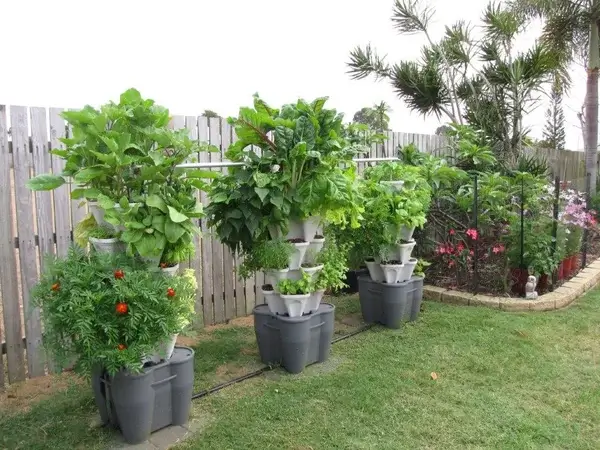
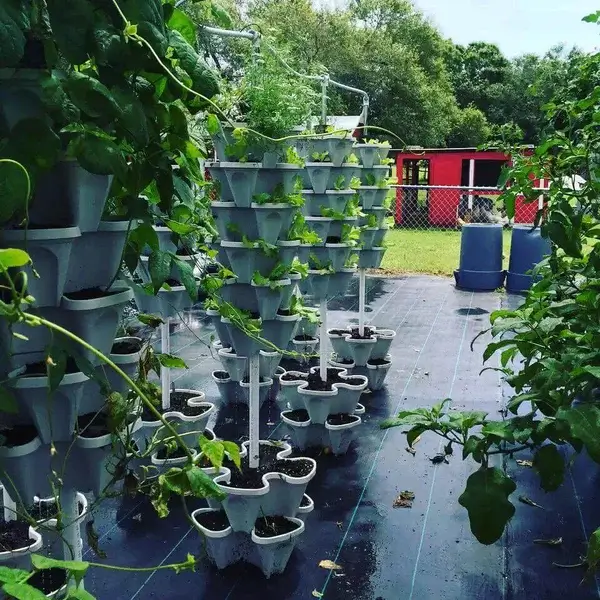
Hydroponic vs Soil
Once you venture into the realm of hydroponics, it’s challenging to look back. It offers robust plant growth, robust and disease-resistant plants teeming with flowers and fruits, all achieved in significantly less time and with lower maintenance than a conventional garden bed. The shift towards hydroponic cultivation is rapidly gaining momentum, and there are compelling reasons behind it. Below we list a few reasons Hydroponic is the best choice of gardening.
Health and Naturalness: Hydroponic nutrients, derived from mineral salts, closely resemble those found in soil but are more readily accessible. Soil, on the other hand, consists of organic matter mixed with added minerals, often from the same sources as hydroponic minerals. The crucial distinction lies in the release speed—soil minerals release nutrients slowly, whereas hydroponic minerals provide a rapid and efficient uptake, promoting optimal growth.
Enhanced Plant Vitality: Hydroponic cultivation yields stronger, healthier, more vibrant plants with elevated vitamin content and superior flavor compared to soil-based methods. Commercial growers are increasingly adopting hydroponics for its ability to control growth factors while conserving space, optimizing crop yields, and enhancing profits.
Pest and Disease Resistance: Robust hydroponically grown plants are less susceptible to pests and diseases, reflecting the natural survival of the fittest principle. Healthy plants possess natural anti-fungal and anti-pest defenses, often obviating the need for pesticides, unlike their soil-based counterparts.
Environmental Benefits: Hydroponic systems benefit the environment by conserving water through recirculation, reducing evaporation and rapid ground absorption. They can save up to 80% more water compared to traditional garden beds, making hydroponics particularly advantageous in urban areas with high demand for fresh, blemish-free produce.
Minimal Digging and Weeding: Hydroponics eliminates the hassle of dealing with weeds and the constant soil disruption required in conventional gardening. Instead, you can simply pour some perlite into a container, creating a clean and hassle-free growing environment.
Want to learn more about the benefits of Hydroponic gardening? Click Here for our full blog – Hydroponic vs Soil – 10 Reasons.
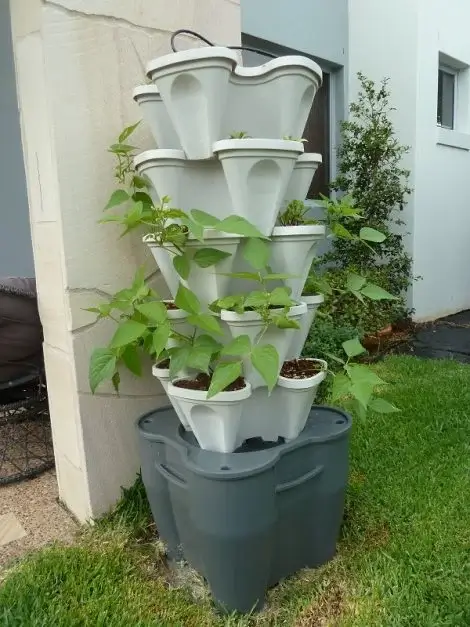
Why Choose the Smart farm?
Our Smart Farm simplifies hydroponics by effectively managing nutrients in nutrient-free coco coir, giving you precise control over your plants and allowing for efficient growth in a much smaller space.
This innovative system stores clean water and nutrients in a spacious reservoir beneath the vertical planter, enabling you to nurture your plants from seed to harvest within a single, user-friendly unit. In contrast, larger hydroponic or aeroponic setups often necessitate seed germination in a separate propagator before transplanting to the growing chambers.
Our approach, employing an inert growing medium fed with water, operates akin to a self-watering pot, but with the added benefit of free draining, filtered hydroponic irrigation.
The system circulates clean, nutrient-enriched water directly to the plant roots, allowing them to densely populate the coco coir substrate with young roots before extending mature roots directly into the circulating water reservoirs.
The outcome is accelerated crop growth, with harvests occurring in approximately half the time typically required for summer-grown crops.

Check out a review of the Mr Stacky Hydroponic Garden Tower by one of our friendly customers!
(118) Real Review: Mr Stacky Hydroponic Garden Tower | Aussie Green Thumb – YouTube
What should you Grow in a Smart farm
The possibilities are truly boundless when it comes to what you can cultivate in these intelligent vertical gardens from Mr. Stacky. We’ve successfully nurtured a diverse range of plants, from leafy greens and herbs to peas, Brussels sprouts, carrots, cabbages, zucchinis, and even strawberries.
If you could traditionally grow it in a moist compost environment at home, rest assured that you can thrive in this system, all while conserving significantly less water in the process!
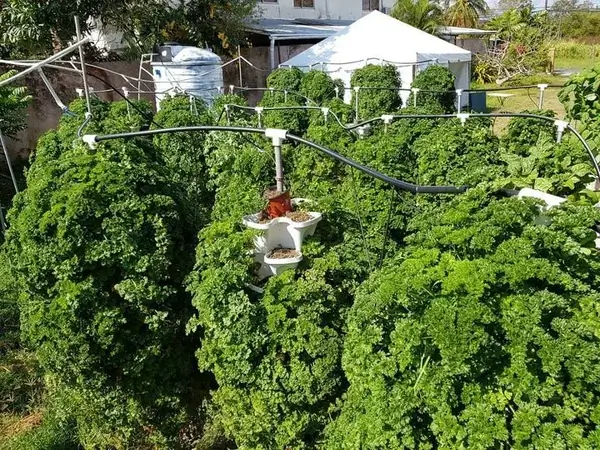
What comes with a Mr Stacky Smart Farm Kit?
Upon the delivery of your Mr. Stacky Hydroponic Tower, you will receive an array of components and equipment, necessitating a certain level of assembly. Therefore, it’s crucial to grasp the precise purpose of each element and the contributions they make to the system.
Smart Farm Reservoir & Lid
The tower’s base serves a dual purpose as both a reservoir and a stable support. Setting it up is a straightforward process—all you have to do is install the pump and solar panel, then place it into the filled tank. After threading the poly tubing through the planters, it operates automatically whenever the sun is shining.
5 Large Planters
The kit includes five UV-protected planters, each with four growing spaces, totaling twenty planting pockets. This allows you to grow twenty plants to maturity or numerous leafy salad plants for continuous harvesting.
Poly Tubing for Pump and Water Connections
The poly tubing, while basic, is sturdy enough for its job. To start, thread the tubing through the stacked planters and connect it to both the pump and the distributor.
5kg Coco Coir & Perlite
You’ll receive 5kg of dried, washed, and compacted coco coir in a convenient bale, enough to fill the entire system. Regardless of your crop choice, it’s advisable to mix in the provided perlite. Coir retains water, while perlite ensures even water and nutrient distribution, especially to plants near the base.
Centre Pole & Coupling
Although the planters stack securely, don’t overlook the need for stability. Adding the center pole and planter coupling is crucial for absolute stability, especially against strong winds or unexpected impacts like flying footballs from other parts of the garden.
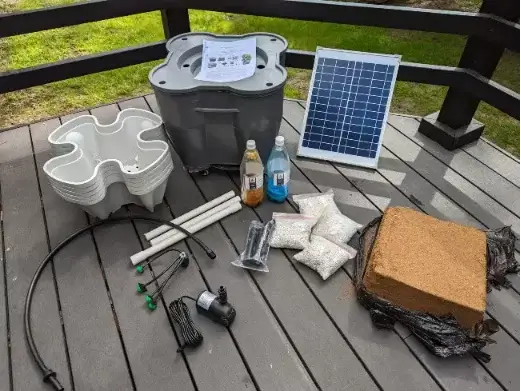
Solar Panel & Pump
The entire system operates on solar power, eliminating the need for electrical outlets and making it suitable for use anywhere in the garden. The solar panel requires a minimum of 4 hours of direct sunlight daily to ensure adequate water circulation. However, in a well-lit, north-facing garden location, this requirement is easily met, resulting in a system with zero operating costs!
550g Nutrients
The nutrients included in the kit are sufficient for your first growing season. As you progress and use them up, consider exploring more advanced organic nutrient options to broaden your knowledge and grow a wider variety of plants.
Water Gauge:
The water gauge is a crucial tool. Insert it into the reservoir to check water levels without the need to lift the lid, which can be challenging once everything is planted.
Distributor Head
Mr. Stacky’s Smart Farm employs a straightforward system. The distributor head functions as a low-pressure sprinkler system, creating a basic drip irrigation system that runs continuously during the day. This provides approximately 8 hours of daily watering, automatically shutting off at night to prevent over-watering.

Optional Extras
You have the choice to add trolleys, extra nutrients (both pellets and liquid), test kits for EC, pH, and nutrients, as well as organic insecticides and nutrient adjusters. If you lean towards a more natural approach and wish to avoid even organic nutrients, you can create your own to save on expenses. However, for beginners, it’s recommended to begin with a few nutrients and pH adjusters after evaluating the quality of your tap water.
Installing your Mr Stacky Smart farm
Setting up the Smart Farm hydroponic system by Mr. Stacky is a breeze – I mean, it’s as easy as pie.
If you can assemble a kids’ jigsaw puzzle, you can put this system together without needing any instructions. Just place the reservoir on level ground, connect the pump to the polytube, then simply place the lid on top and secure the central pole.
After that, simply add each planter, securing them with the central pole coupling, threading the tubing through the middle as you go. Once you reach the top, fasten the distribution head, and you’re good to go.
Move your newly assembled Mr. Stacky planter to a sunny spot and fill the planters with compost and perlite. Top up the reservoir, add the necessary nutrients, and position the solar panel where it can soak up plenty of sunlight.
It should start running immediately if the sun is shining – that’s all there is to it! You’ll have a fully operational, ready-to-plant vertical hydroponic garden at your fingertips.
If you want more information on setting up your Smart Farm, Check out our video tutorial.
How to set-up Smart Farm Hydroponic Tower Garden
FAQ's
What types of plants can be cultivated in the Mr. Stacky vertical garden?
The Mr. Stacky systems feature spacious planting pockets, and their circular watering method minimizes the chances of pests and diseases, allowing you to cultivate nearly everything except for mature trees and large shrubs. Begin with smaller crops like lettuce and kale, then progress to growing pumpkins, cabbages, and broccoli as you gain confidence.
How do I go about adding nutrients to my hydroponic tower?
To nourish all hydroponic systems, you’ll use a combination of nutrients known as A & B nutrients. These can be administered in equal proportions consistently throughout the year, without the need for adjustments during different growth stages. For the 60L tank in the Mr. Stacky Smart Farm, simply add 300ml of each nutrient every two weeks.
How to prevent excessive watering in a hydroponic tower?
In situations with limited light, hydroponic systems utilizing coir-based growing mediums may experience excessive moisture retention, causing reduced circulation. If you notice that your reservoir is depleting faster than usual, yet the coco coir remains moist, contemplate relocating the entire tower to a sunnier location. This adjustment will facilitate faster water evaporation and nutrient absorption by the plants, helping to avoid overwatering.
What kind of upkeep is necessary for the Mr. Stacky Hydroponic system?
Maintaining the Mr. Stacky Hydroponic system is exceptionally straightforward, requiring minimal attention. You’ll only need to replenish water and nutrients approximately every two weeks. Thanks to its solar panel system, it autonomously handles watering, provided you position it in a sunny area. Apart from nutrient top-ups, your primary task will be harvesting your vegetables and herbs.
Do I need to manage garden pests with this system?
In our experience so far with this system, we have had no pests at all on our plants. Even when plants around the Mr Stacky system had pests such as aphids, the Mr Stacky plants didn’t have any at all. This could be because of the nutrient solution provided by Mr Stacky. Still, ensure you monitor pests and keep them under control should they turn up.


How to Maximise Yield in in the Smart Farm Tower Garden – Vertical Gardening with Mr Stacky

About the Author
Mr Stacky is the leader in Tower Garden Systems in Australia, specializing in commercial hydroponic farming, urban farming & residential vertical gardening.
Find out how he can help you achieve your food production goals. Contact Brian
